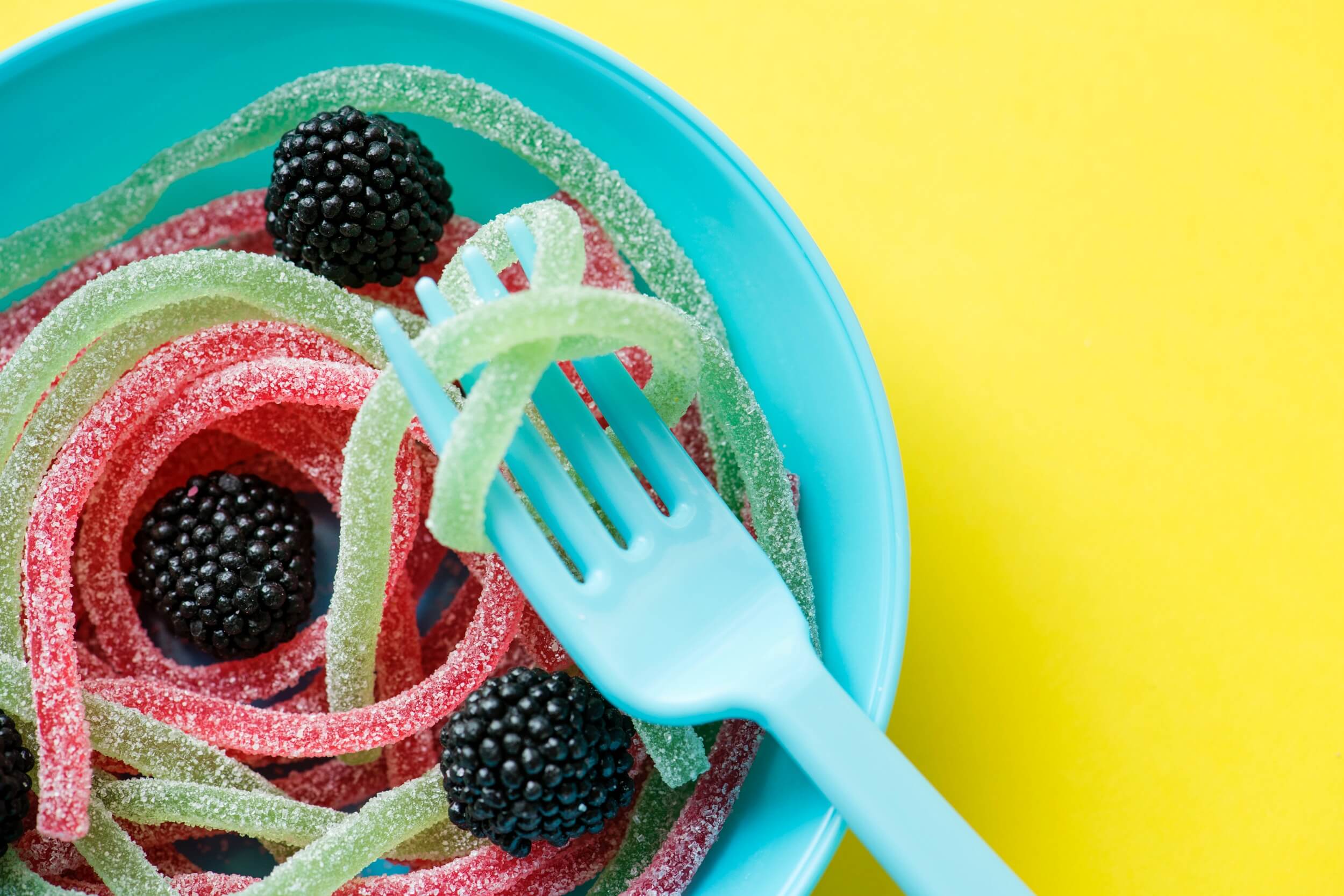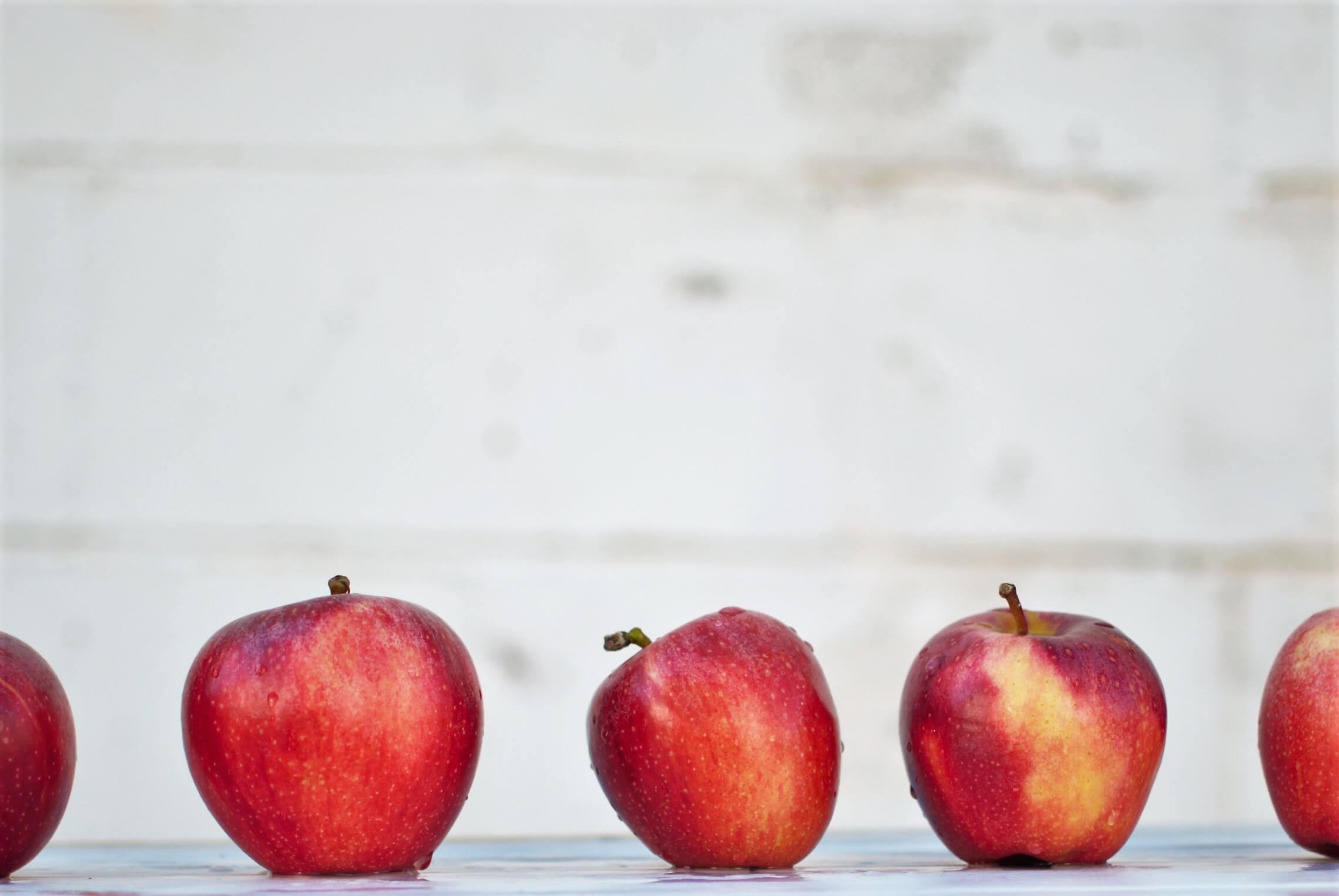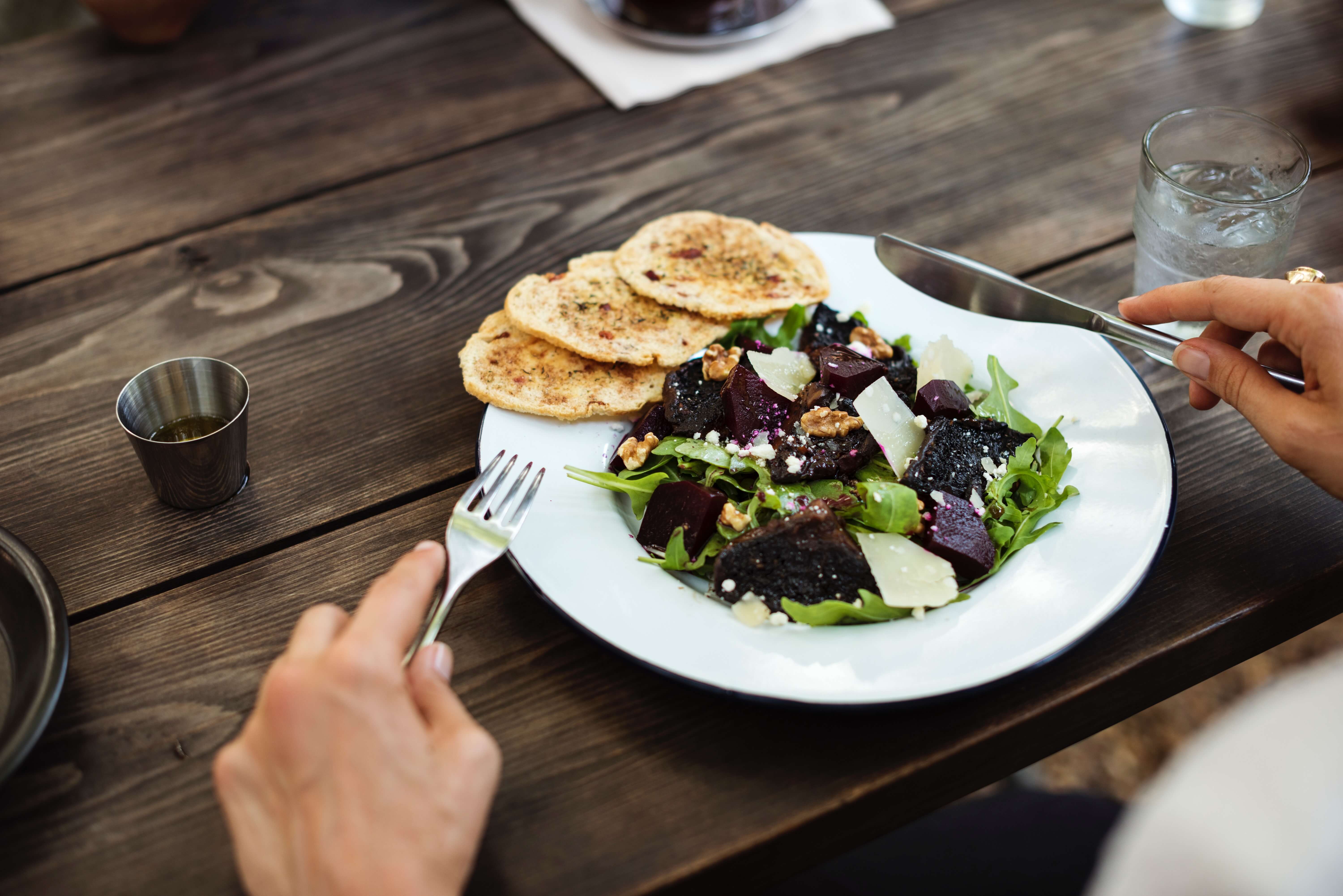How My Running Changed When I Cut Added Suggars

With my current running game strong as I train for my next half marathon it was time to refocus my efforts on my nutrition. Once finding it easy to always reach for healthy, wholesome and nutritious foods, my continuous case of always being hungry left me scratching my head as to why I have been craving sweets so much? A peek into my diet revealed that all those caramel lattes were most likely the culprit to the tiredness, belly bloat, and overall blah feeling.
This is why it was time to attempt to cut added sugars from my diet. My hopes after the week were that my running performance would change. I just didn’t expect both my diet and workouts to change so much.
The Skinny On Added Sugars
The reader probably noticed I write added sugars. To be clear, I didn’t cut sugars completely. The truth is it impossible to escape sugar.
I have read and watched enough documentaries to know sugar is pretty much the root of all things evil in our diet, especially since we consume way too much. The average American consumes about 17 teaspoons of sugar every day. To put this number into perspective that is just about 57 pounds of added sugar per person each year.
While that fact is hard to swallow, consider the fact that the World Health Organization recommends that less than 10 percent of adult’s calories should be from sugar—and the natural kind I should add. Think the sugar naturally found in strawberries or a sweet potato. Not the 11 teaspoons of sugar in one 12 oz. can of soda.

Natural vs. Added Sugar
There is a big difference between natural and added sugars. Sugar—at its core—is needed in order for the body to create energy to be able to function. There are natural sugars in fruits, vegetables and even our favorite carbs like bread.
This kind of sugar is known as fructose, glucose, and lactose.
Added sugar, also known as table sugar is sugar that is added to food. This is known as sucrose (the combo of fructose and glucose). Other added sugars are maple syrup, honey, but there are also more than 60 other names for added sugar found on food labels. These include agave nectar, cane juice, corn syrup, dextrin, dextrose, HFCS (high-fructose corn syrup), maltodextrin, maltose, rice syrup, and saccharose.
Why Cut Out Added Sugar
Eating too much sugar increases the risk of weight gain and obesity, plus the laundry list of complications that come with that such as type 2 diabetes and other illnesses like heart disease and fatty liver disease.
Cutting out added sugar from the diet reduces the amount of sugar we are consuming. This often means making healthier food choices that lead to many more health benefits.
What Can You Eat In A Sugar Detox
Don’t focus on natural sugar found in fruit and dairy. Instead, focus on the added sugars like adding honey to the plain yogurt. Eliminate sugary soft drinks from the diet, as well as fruit juices. All candy and baked goods like cookies should also be cut.
And then there are the added sugars in processed foods. Use this detox as a way to start cooking more so that you know exactly what you are consuming.
“Become an expert at reading food labels,” NYC-based Registered Dietitian, Natalie Rizzo, MS, RD, author of The No-Brainer Nutrition Guide For Every Runner told RunnerClick.
This is a must when going on a sugar detox.
“Added sugar hides in the ingredients on a lot of foods, and it comes in many forms, like honey, agave, corn syrup, dextrose, brown rice syrup and more,” she said. “You need to be aware of these ingredients and check the labels on processed foods, especially sauces, yogurts, cereals, frozen foods, and bread.”
Because sugar has so many names, it’s crucial to know how to identify it. A good tip is that if a package of food lists sugar in the first three ingredients, don’t eat it.
Know that even “healthy” foods can be packed with sugar. Salad dressings, coffee creamer, pasta sauce all contain sugar.
Do not switch to artificial sugars because these have been linked to harmful health effects like migraines, cancer, the killing of the good bacteria in the gut and even weight gain. Artificial sugars trick the mind to think it’s consuming sugar but actually makes the body craves more sugar since it really isn’t being satisfied.
Rizzo recommended eating mostly whole foods like fruits, vegetables, whole grains, lean proteins, nuts, seeds, legumes, beans, and dairy. “If those foods are the majority of your diet, you won’t even need to think about added sugar,” she said.

On a sugar detox, focus on protein form lean meats like chicken, as well as eggs, lots of vegetables and healthy fats like avocado. Fish, tofu, unprocessed legumes and nuts, and seed are foods to eat. It’s recommended to keep carbs away for three days, but it is okay to then whole grains, brown rice, and oatmeal. Do not eat white potatoes, white flour, corn, white rice, and white bread.
Some recommend eliminating fruit and dairy for a few days to see (and feel) better results with the detox. However, introduce them back by day four. Some experts like Rizzo are not a fan of removing dairy when detoxing unless there is a lactose issue. Milk, yogurt, and cheese are fine to eat, but some opt to limit these.
Be smart about the types of fruits consumed when on a sugar detox. An apple contains sugar, but also fiber so aids in digestion. Watermelon and pineapple are full of sugar so skip these.
How Long Should You Detox From Sugar
It’s recommended to detox from sugar for about 10 days to rid the body of the junk. Some go for a quick 3-day detox, whereas others go for a week. Some people opt to commit to 30 days with no added sugars, and then there are those who make this a permanent diet change.
The longer a person sticks to the detox, the more results they see. This includes weight loss, reduction in headaches, clearer skin, and better focus.
Should Runners Detox From Sugar?
But then what about runners?
“In terms of natural sugar, runners don’t need to cut back,” Rizzo said. “The sugar found in fruits, vegetables, and grains give them energy for their workouts.”
But runners should still be conscious of their added sugar intake. “In terms of added sugar, it definitely shouldn’t be a free for all, even for runners,” she added. “Sports nutrition products are formulated to give sugar to working muscles, plus electrolytes for hydration, but they should only be used when you’re running for longer than 60 minutes. For the average runner who is running a few miles per day, they should still watch their added sugar intake.”
In short, runners need sugar (glucose) to fuel their bodies during a run. That means those energy gels are acceptable for those looking to remove added sugars because it is only replenishing glucose stores that are running low during the long run.
My Experiences: Diet, Mood, & How My Running Changes
The reader might have also noticed I write I attempted to eliminate added sugar from the diet. I write that because I did cheat once or twice.
Out of curiosity, I also decided to stay away from dairy as well since this was a short week experiment and I wanted to see and feel real results. I am pleased to say I didn’t suffer from sugar headaches that often come when detoxing from it. I think that’s thanks to still drinking my morning cup of coffee—this time without sugar and just with almond milk.

The first day wasn’t hard at all, it was days to and three where I felt a crash in the late afternoon that had me adding one sugar into my coffee. But interestingly enough, I never went over my recommended alloted grams of sugar for the seven days.
To track my sugar intake, I used MyFitnessPal which breaks down macros based on user specifics like age, height and weight and goals. I was able to add my exercise in as well which provided me like more accurate insights to my daily sugars based on how much was being burned.
It was a challenge to work around not consuming added sugars, but it was doable like not adding ketchup to my veggie patty. I did cheat on dairy too when using some ranch for my carrots and celery snack. But I was working out consistently and found that I was more focused, clear-headed, well rested and had the energy to kill it in my workouts.
Here is what my workouts looked like during the week:
Monday: Rest Day
Tuesday: 40 minutes hills run
Wednesday: 45-minute spin class, 45 minute HIIT boot camp class
Thursday: 5-mile run
Friday: 30-minute kickboxing
Saturday: 9-mile run
Sunday: rest day
I found that I did have lots of energy and felt light, not bloated, fit and fast. I think this is because of the change in my diet to focus on more healthy and wholesome foods. This includes baked winter squash with salt and pepper for a snack and ground turkey stuffed tomatoes for a healthy taco dish.

Removing the dairy was much easier because there are plenty of substations like almond milk or dairy-free cheese. But it was sugar that was a challenge because I quickly found it was in everything. This made me pay more attention to food labels and practice mindful eating. Finally, I was focusing more on eating my veggies instead of looking for a sugary pick me up mid-day. And when I did cheat and have that caramel latte, I immediately noticed how much sugar I could taste. This put things into perspective, teaching me I didn’t need the sugar. And that I could actually learn to live without it.
Feelings And Mood
Besides feeling sluggish on days 2 and 3 late afternoons, I had a boost in mood overall. I had more energy and an overall positive mindset.
Challenges
Escaping added sugar is very hard. It’s not impossible but can seem that way. Stick with it, read labels and know that it gets easier and you will feel better with each day. It means cutting things you think you need like coffee creamer or dipping sauces, but these are able to be learned to leave behind.
How It Affected My Running
I did not notice a difference in my running performance. If anything I felt like it was a great week fitness wise, able to complete my runs without feeling run down. I did consume an energy gel for my 9 milers.
Results & What I Learned
I ended up losing a pound of a half and noticed more definition in my abs and less bloat. I learned there is added sugar in just about everything, but there is a difference between “good” and “bad” sugar. The thing is once a person removes the added sugars from their diet, they will crave wholesome food and notice how sweet added sugars make our food.
As a runner, I was able to balance my diet better, which lead to good performance. It was a struggle post workout to limit carbs and not be tempted by baked goods that would sometimes be a treat after a good workout.
Remember that whether it’s a short-term detox or a lifestyle change, it’s okay to treat yourself every once in a while. “Don’t make yourself nuts about added sugar,” Rizzo said.
“The Dietary Guidelines recommends that added sugars should be no more than 10% of your calories in a day. That’s 200 calories, or about 12 teaspoons of sugar, for a 2,000 calorie diet,” Rizzo said. “In other words, you can have some added sugar, so feel free to have a piece of dark chocolate if you want it!”
Sources
- , How Much Is Too Much? The growing concern over too much added sugar in our diets, Scientific Website
- , How Different Are Naturally Occurring Sugars Really From Added Ones?, Health Wesbite
- , 8 Big Lies About Sugar We Should Unlearn, Health Website
- , Daily Intake of Sugar — How Much Sugar Should You Eat Per Day?, Health Website
- , WHY ARTIFICIAL SWEETENER IS WORSE FOR YOU THAN SUGAR, Health Website
- , Your Easy Guide to the Sugar Detox Diet, Health Website
- , Sugar Detox – Everything You Need to Know Before Detoxing From Sugar, Blog
Latest Articles
 Is Running on a Treadmill Easier Than Running Outside?Runners have their own preferences, whether it is treadmill running, running outside on the road, or exploring trails. So...
Is Running on a Treadmill Easier Than Running Outside?Runners have their own preferences, whether it is treadmill running, running outside on the road, or exploring trails. So... Is It OK to Use Trail Running Shoes on the Road?While trail running shoes can be used on roads, especially in situations where a runner encounters mixed terrains or pref...
Is It OK to Use Trail Running Shoes on the Road?While trail running shoes can be used on roads, especially in situations where a runner encounters mixed terrains or pref... How to Fix Sore Quads After Running?Rest, ice, gentle stretching, and over-the-counter pain relievers can help soothe sore quads after running. Also, ensure ...
How to Fix Sore Quads After Running?Rest, ice, gentle stretching, and over-the-counter pain relievers can help soothe sore quads after running. Also, ensure ... 10 Fruits With The Most Electrolytes to Replace Sports DrinksThese fruits are high in electrolytes such as potassium, magnesium, and calcium, essential for hydration, muscle function...
10 Fruits With The Most Electrolytes to Replace Sports DrinksThese fruits are high in electrolytes such as potassium, magnesium, and calcium, essential for hydration, muscle function...

